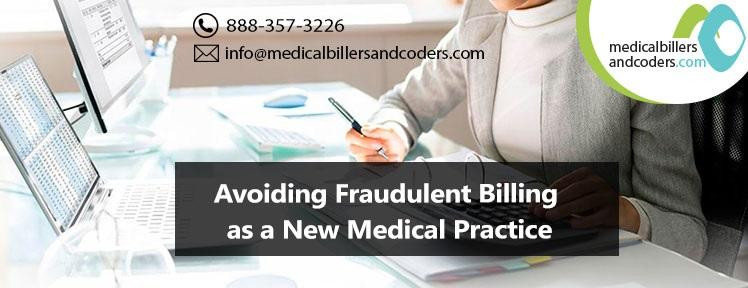Avoiding Fraudulent Billing as a New Medical Practice

As a healthcare provider, during your residency, you probably are not focused on who pays for your patients’ care. Once you start practicing, it is important to understand who the payers are. The U.S. healthcare system relies heavily on third-party payers, and, therefore, your patients often are not the ones who pay most of their medical bills. Third-party payers include commercial insurers and the Federal and State governments. When the Federal Government covers items or services rendered to Medicare and Medicaid beneficiaries, the Federal fraud and abuse laws apply. Many States also have adopted similar laws that apply to your provision of care under State-financed programs and to private-pay patients. Consequently, you should recognize that the issues discussed here may apply to your care of all insured patients. The topics discussed in this article will help you in avoiding fraudulent billing as you have just started your new medical practice.
Accurate Coding and Billing
Government and even commercial payers trust you, as a physician, to provide necessary, cost-effective, and quality care. You exert significant influence over what services your patients receive, you control the documentation describing what services they received, and your documentation serves as the basis for bills sent to insurers for services you provided. The Government’s payment of claims is generally based solely on your representations in the claims documents.
Because the Government invests so much trust in physicians on the front end, Congress provided powerful criminal, civil, and administrative enforcement tools for instances when unscrupulous providers abuse that trust. The Government has broad capabilities to audit claims and investigate providers when it has a reason to suspect fraud. Suspicion of fraud and abuse may be raised by irregular billing patterns or reports from others, including your staff, competitors, and patients.
Let’s consider an example of billing Medicare or Medicaid. When you submit a claim for services performed for a Medicare or Medicaid beneficiary, you are filing a bill with the Federal Government and certifying that you have earned the payment requested and complied with the billing requirements. If you knew or should have known that the submitted claim was false, then the attempt to collect unearned money constitutes a violation. A common type of false claim is “upcoding,” which refers to using billing codes that reflect a more severe illness than actually existed or a more expensive treatment than was provided. Additional examples of improper claims include:
- billing for services that you did not actually render;
- billing for services that were not medically necessary;
- billing for services that were performed by an improperly supervised or unqualified employee;
- billing for services that were performed by an employee who has been excluded from participation in the Federal health care programs;
- billing for services of such low quality that they are virtually worthless; and
- billing separately for services already included in a global fee, like billing for an evaluation and management service the day after surgery.
Defining Upcoding
Medicare pays for many physician services using Evaluation and Management (E&M) codes. New patient visits generally require more time than follow-up visits for established patients, and therefore E&M codes for new patients command higher reimbursement rates than E&M codes for established patients. An example of upcoding is an instance when you provide a follow-up office visit or follow-up inpatient consultation but bill using a higher level E&M code as if you had provided a comprehensive new patient office visit or an initial inpatient consultation. Another example of upcoding related to E&M codes is a misuse of Modifier 25. Modifier 25 allows additional payment for a separate E&M service rendered on the same day as a procedure. Upcoding occurs if a provider uses Modifier 25 to claim payment for an E&M service when the patient care rendered is not significant, was not separately identifiable, and was not above and beyond the care usually associated with the procedure.
To learn more about Avoiding Fraudulent Billing as a New Medical Practice, click here: https://bit.ly/3Ptbyf2, Contact us at info@medicalbillersandcoders.com/ 888-357-3226.



